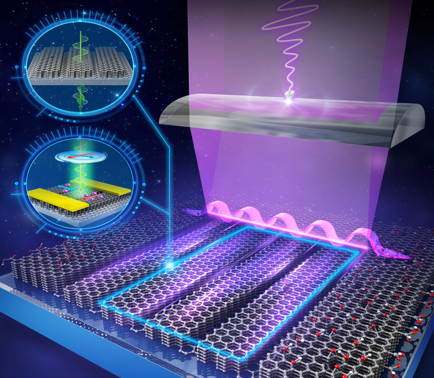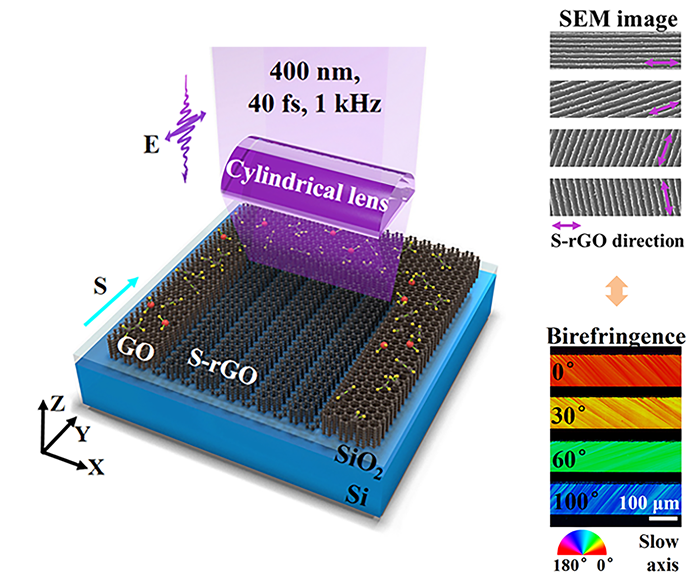Author: |
Editor: ZOU Tingting | Oct 25, 2021
In recent years, the study of in-plane anisotropic optoelectronic thin film materials has attracted a great deal of attention in the field of polarized optoelectronic applications due to their ability to be integrated and miniaturized. The existing anisotropic two-dimensional materials are limited in variety and mostly mechanically exfoliated, making it difficult to achieve large-area material preparation, which greatly limits their application in practical applications. Therefore, it is necessary to explore an artificial anisotropic thin film material with excellent anisotropic optoelectronic properties to overcome the above problems.
Jianjun Yang's research group at Changchun Institute of Optics, Fine Mechanics and Physics (CIOMP) of the Chinese Academy of Sciences published research findings on Nano Research. This research has adopted a method to prepare large-area subwavelength periodic grating surface structures on the surface of graphene oxide thin films (GO, <100 nm) and achieved in situ reduction (S-rGO). Such a S-rGO film formed by endowing an isotropic GO surface with a micro-nano structure exhibits excellent in-plane optical birefringence and anisotropic optoelectronic properties.
The birefringence of S-rGO exhibits a maximum optical phase delay of approximately 9.4°at the wavelength of 546 nm. And its slow axis direction is always parallel to the grating structures. The birefringence coefficient of S-rGO is approximately 0.18, which is comparable to those natural anisotropic materials.
The photoresopnse of the S-rGO device is angle-dependent to the incident light polarization states, It also demonstrates the excellent property of tunable anisotropy ratio as the laser processing parameters are varied. Compared to anisotropic two-dimensional materials, S-rGO exhibits an additional degree of freedom for tuning anisotropy ratio.
In summary, this work provides a feasible method for the preparation of artificial in-plane birefringent materials. This simple structural design and flexible sample preparation process is expected to enable a wider variety of artificial in-plane optoelectronic anisotropic materials to replace natural anisotropic materials, opening up a wide range of prospects for the production and practical application of new devices.


Fig.1 Fabrication of S-rGO and its performance of birefringence.
Contact:
Author: Prof. Jianjun Yang
Changchun Institute of Optics, Fine Mechanics and Physics, Chinese Academy of Sciences
Changchun, Jilin 130033, China
E-mail: jjyang@ciomp.ac.cn
Article links: https://doi.org/10.1007/s12274-021-3505-x
